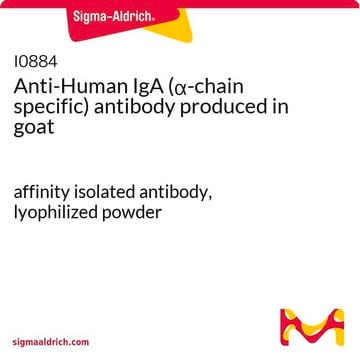F8646
Anti-Mouse IgG (Fc specific) F(ab′)2 fragment−FITC antibody produced in goat
affinity isolated antibody, buffered aqueous solution
About This Item
Recommended Products
biological source
goat
conjugate
FITC conjugate
antibody form
affinity isolated antibody
antibody product type
secondary antibodies
clone
polyclonal
form
buffered aqueous solution
storage condition
protect from light
technique(s)
immunohistochemistry (formalin-fixed, paraffin-embedded sections): 1:320
storage temp.
−20°C
target post-translational modification
unmodified
Looking for similar products? Visit Product Comparison Guide
General description
Anti-Mouse IgG (Fc specific) F(ab′)2 fragment−FITC antibody is specific for the Fc fragment of mouse IgG. No cross reactivity is observed with the Fab fragment of mouse IgG. Purified antibody is conjugated to fluorescein isothiocyanate (FITC) in an alkaline reaction and then purified to remove unbound FITC.
Specificity
Immunogen
Application
Other Notes
Physical form
Preparation Note
Useful when trying to avoid background staining due to the presence of Fc receptors.
Disclaimer
Not finding the right product?
Try our Product Selector Tool.
Storage Class Code
11 - Combustible Solids
WGK
WGK 3
Flash Point(F)
Not applicable
Flash Point(C)
Not applicable
Personal Protective Equipment
Certificates of Analysis (COA)
Search for Certificates of Analysis (COA) by entering the products Lot/Batch Number. Lot and Batch Numbers can be found on a product’s label following the words ‘Lot’ or ‘Batch’.
Already Own This Product?
Find documentation for the products that you have recently purchased in the Document Library.
Our team of scientists has experience in all areas of research including Life Science, Material Science, Chemical Synthesis, Chromatography, Analytical and many others.
Contact Technical Service








